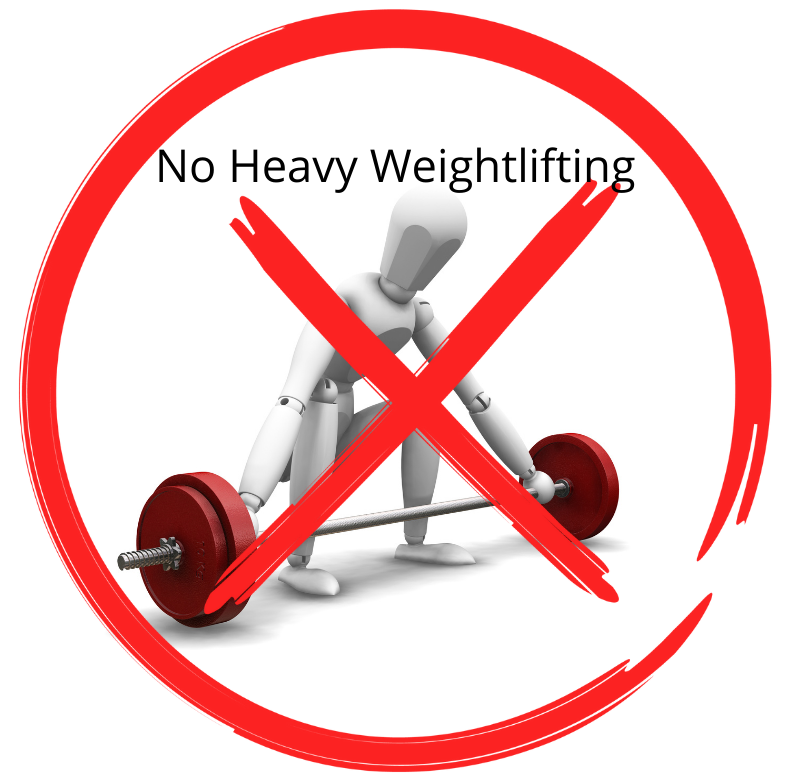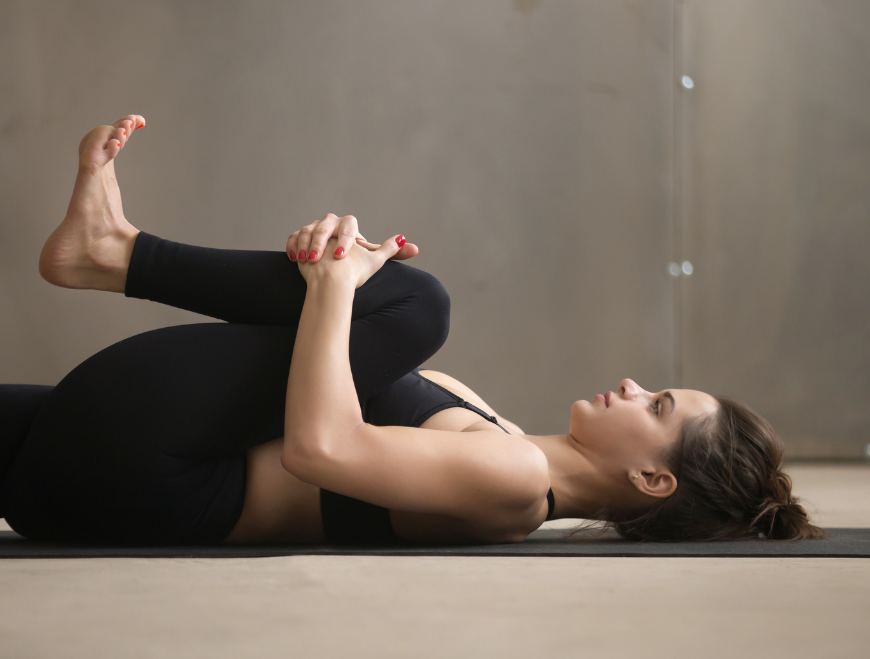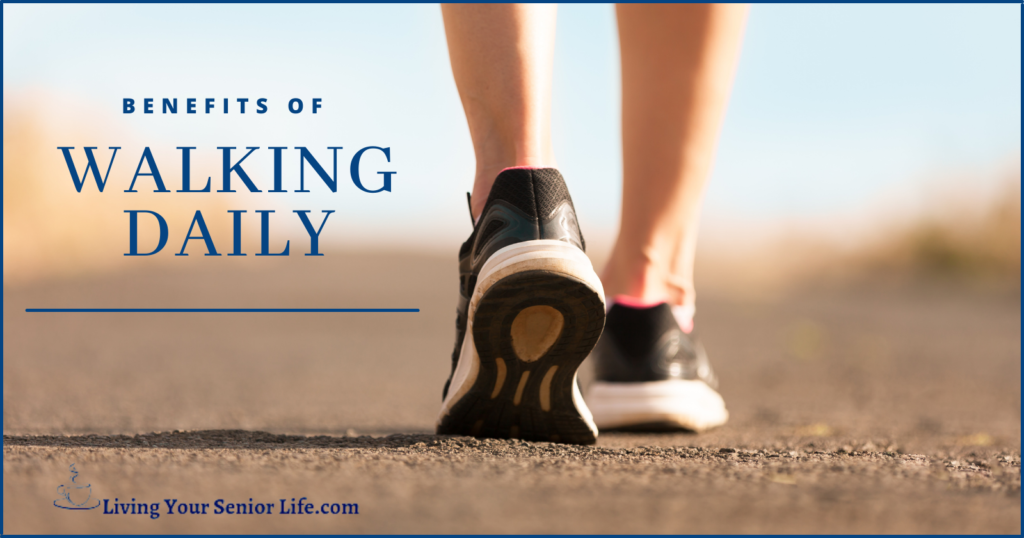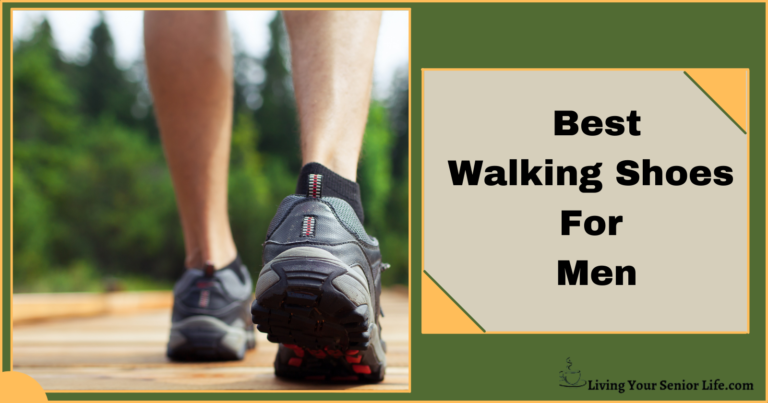If you experience lower back pain, you may wonder if exercise is safe for you. In this article, How To Exercise With Lower Back Pain, we will explore the types of exercises that are beneficial for back pain and those that should be avoided. It is important to consult with your doctor before starting any exercise program, as they can help create a program tailored specifically to your needs and abilities.
This post is for informational purposes only and should not be used in place of the advice of a medical professional.
Key Takeaways:
When it comes to exercising with lower back pain, it’s important to take certain precautions to avoid further injury. Here are some key takeaways to keep in mind:
- Consult with your doctor or physical therapist before starting any exercise program to ensure it’s safe for you to do so.
- Focus on exercises that strengthen your core muscles, which can help support your lower back. This includes exercises like planks, bridges, and bird dogs.
- Avoid exercises that put excessive strain on your lower back, such as sit-ups, crunches, and heavy lifting.
- Incorporate low-impact exercises like walking, swimming, or cycling into your routine to improve cardiovascular health and reduce stress on your lower back.
- Listen to your body and stop any exercise that causes pain or discomfort. It’s better to take a break and let your body rest than to push through the pain and risk further injury.
Is Working Out Bad for Your Back?
Most people will experience lower back pain at some point in their lives. In fact, according to the Mayo Clinic, 80% of the adult population will experience some type of back pain in their life. With that many people susceptible to back pain, many people may wonder if working out is bad for the back.
Working out is not “bad” for your back, but rather the right exercise can be therapeutic. Exercise can help strengthen the muscles in your back, which can help support your spine and improve your overall posture. Additionally, exercise can help to improve your overall flexibility and mobility, which can help reduce the risk of further injury.
However, certain exercises may aggravate your back pain, such as those that require sitting or standing for long periods of time, overuse of certain muscles, or poor posture during exercise. It’s important to consult with a healthcare professional before starting any exercise program, especially if you have a history of back pain or injury.
Can Exercise Make Lower Back Pain Worse?
Let’s start with the negative aspect first and get that out of the way. It bears repeating: It is essential to consult your doctor before beginning any exercise program.
Before engaging in any exercise program, it is essential to consult your healthcare provider, especially if you have acute pain, disc problems, weakness, or osteoporosis. Although exercise can help alleviate lower back pain, it can also worsen it if not done correctly.
Yes, exercise can make back pain worse if not done correctly. Be sure to start slowly and increase the intensity of exercises as your condition improves so that the workout does not worsen the pain further. You can also try different exercises until you find the ones that work best for you. You may need to avoid some exercises, and you may need to modify others. Be sure to always listen to your body and stop if you experience any pain or discomfort.
It takes some patience and carefulness to ensure that the exercise does not worsen the condition. It may take time, but working out can help you feel better with lower back pain.
Video: How To Exercise With Lower Back Pain
Some Exercises You Want To Avoid When Experiencing Back Pain Include:

When it comes to exercising with lower back pain, it is important to strike a balance between staying active and avoiding activities that exacerbate your symptoms. With the right exercises, you can strengthen your back muscles and improve your posture, which can help alleviate chronic back pain. However, certain exercises can make your symptoms worse, so it is important to know which exercises to avoid.
Certain exercises and types of activities should not be done when a person is having back pain or back issues of any kind. These are:
- Heavy weightlifting, which puts a lot of strain on your shoulders and pelvis, and can also cause you to bend your lumbar spine in a way that exacerbates your pain.
- Hyperextensions, which involve lying down on your stomach and raising your upper body off the ground. This can put a lot of pressure on your lower back and pelvis.
- Twisting motions, which can cause your lumbar spine to bend in an unnatural way and worsen your pain.
What Are Some Exercises That I Can Do?
If you are experiencing lower back pain, there are several exercises that you can do to help alleviate the discomfort. The following low-impact activities are excellent options that place minimal stress on the lower back and can provide pain relief:
– Cycling

Cycling is a low-impact exercise that can be done indoors or outdoors. It is an excellent exercise for people of all ages and abilities. Cycling can help improve your overall fitness level and can help burn calories. It also strengthens your leg muscles, which can help support your back.
If you are new to cycling, start by doing a few 10-minute sessions and gradually increase the time as you get stronger. While cycling is an excellent exercise to help relieve lower back pain, listening to your body and not pushing yourself too hard is essential. If you experience any pain or discomfort when cycling, stop and take a break. If the pain persists, consult your doctor.
Bicycles and Seniors – I Bet You Haven’t Forgotten How
– Pilates

Pilates helps strengthen muscles around the spine and hips while stretching the upper body and lower body muscles. This exercise is also known to help improve one’s posture, which can ease some of the discomfort associated with having low back pain.
The exercise program consists of movements performed slowly and deliberately, with attention to proper form. The exercise focuses on controlled breathing, which is thought to aid in relaxation.
Before starting a Pilates exercise program, you should discuss the exercise and exercise equipment with your doctor or physical therapist. When allowed, you can begin your exercise routine with simple exercise movements and work up to the more complex ones as your strength and flexibility improve.
It should be noted that Pilates exercises should not cause pain or discomfort when done properly, so exercise caution if you are having lower back pain.
– Swimming

Swimming is a great exercise for people with lower back pain because it’s gentle, low impact, and doesn’t put any pressure on your spine or spinal discs. It also helps stretch and strengthen your back muscles, which can provide relief from pain.
– Walking

Walking is a great exercise to start with for those with lower back pain because it is low impact and does not require much flexibility. One of the best things about walking as an exercise is that you can do it almost anywhere and at your own pace.
There should be no problems as long as you keep good posture and avoid over-straining yourself. However, If you experience any pain or discomfort when walking, stop and take a break. If the pain persists, consult your doctor.
– Yoga

Research has shown that Yoga can help with back pain relief and it has been proven to be better than exercise alone for back pain. Yoga exercise does not involve using machines, can be done easily without any help, and involves exercise postures that are simple to do. Yoga exercise stretches out your muscles and keeps them flexible. Stretches also improve alignment in the spine. Yoga exercise also helps exercise breathing patterns.
When selecting exercises, you will want to focus on low-impact activities that place minimal stress on the lower back and hopefully will bring some pain relief. You should avoid exercises that require excessive twisting or bending of the spine. It is important to listen to your body and not push yourself too hard. If you experience any pain or discomfort when doing these exercises, stop and take a break. If the pain persists, consult your doctor.
Basic Stretches That Strengthen The Back Muscles
Stretching and strengthening the lower back muscles can help relieve back pain and improve function. However, it is important to consult with your doctor before starting any stretching exercises, and to stop any stretches that cause pain or discomfort.
Here are some basic stretches that can help strengthen your back muscles:

Some of these stretches include:
- Cat-Cow: Get on all fours, with your hands below your shoulders and your knees below your hips. Inhale as you tuck your chin and round your back, pulling your belly button in to contract the abdominal muscles. Exhale as you push your abdominal muscles toward the floor and arch your back like a cow. Do 5-10 rounds.
- Gluteal stretch: Lie on your back with both legs bent and feet flat on the floor. Place a strap or belt around the ball of one foot and hold the other end with your hand. Gently pull the strap or belt until you feel a stretch in your buttock. Hold for 30 seconds and repeat with the other leg.
- Hamstring stretch: Sit on the floor with your legs straight out in front of you. Bend forward at the waist, reach for your toes, and hold for 10 seconds. Repeat five times.

- Single Knee to Chest Stretch: The Single Knee to Chest Stretch is a great way of restoring flexibility in the low back following an afternoon hunting or housework session. The stretch can also help reduce stiffness from spinal arthritis and/or stenosis by increasing joint movement range of motion, which will decrease inflammation associated with these conditions over time as well.
- Lie on your back with your knees bent and feet flat on the floor.
- Gently raise one bent knee up enough so you can grasp your lower leg with both hands. Interlace your fingers just under the knee.
- Using your hands pull your bent knee toward your chest.
- As you’re pulling, try to relax your legs, pelvis, and low back as much as you can.
- Hold for a few seconds.
- Return your leg to the floor.
- Repeat on the other side with the other leg.
Incorporating these stretches into your daily routine can help improve lower back flexibility and muscle strength. Remember to always listen to your body and stop any stretches that cause pain or discomfort.
What About Cardio Exercise With Lower Back Pain?
If you have lower back pain, you may be wondering if you can still do cardio exercise. The good news is that you can! However, you should avoid high-impact exercises like running, jumping, or anything that can be jarring to your body. Instead, try low-impact exercises like walking, swimming, and cycling. These exercises are excellent for people with lower back pain because they get your heart rate up without putting too much strain on your back.
Start slowly and gradually increase the intensity as your back pain improves. Remember to listen to your body and stop if you experience any pain or discomfort. With the right exercises and approach, you can still stay active and enjoy the benefits of cardio exercise even if you have lower back pain.
Common Causes of Lower Back Pain During Exercise
Lower back pain during exercise can be caused by poor form, muscle imbalances, or underlying medical conditions. It is important to identify the cause of your pain to avoid further injury. If you are experiencing pain during exercise, stop immediately and seek advice from a physical therapist.
Warming Up Before Exercising with Lower Back Pain
Warming up with light aerobic activity and stretches can prepare your muscles and reduce the risk of injury. A good warm-up routine should include dynamic stretches that target the lower back, hips, and hamstrings. Examples of these stretches include:
- Knee-to-chest stretch
- Seated spinal twist
- Cat-cow stretch
Remember to hold each stretch for at least 15 seconds and avoid bouncing or jerking movements.
The Role of Core Strength in Managing Lower Back Pain
A strong core can provide better support to the lower back, reducing the risk of injury and pain. Exercises that target the core muscles can help improve posture, mobility, and core stability. Some effective core exercises for managing lower back pain include:
- Plank
- Bird dog
- Glute bridge
It is important to maintain good posture during these exercises and avoid any movements that cause pain or discomfort.
Remember to exercise until the point of mild fatigue, avoid exercises that last too long, and allow adequate time for recovery after exercise. If you are experiencing chronic lower back pain, exercise should be avoided on multiple consecutive days. Consult with your physician before beginning any exercise program to ensure it is safe for you.
Exercise Duration, Intensity, And Recovery
Exercise intensity is essential to consider when dealing with lower back pain. Remember, exercise is therapeutic only when done correctly.
You should only exercise until the point of mild fatigue. Exercising beyond this point puts unnecessary stress on the spine and can worsen lower back pain.
It is also important to avoid exercises that last too long. Extended periods of activity can lead to increased pain and fatigue. Exercise duration will depend on your level of conditioning. A good rule of thumb is to exercise for at least 20 minutes, but not more than 60 minutes.
Finally, you will want to allow adequate time for recovery after exercise. For most people, 48 hours is sufficient. However, if you are experiencing chronic lower back pain, exercise should be avoided on multiple consecutive days.
Remember, before beginning any exercise program; you should consult your physician to make sure exercise is safe for you.
FAQs
What are some common mistakes to avoid when exercising with lower back pain?
Some common mistakes to avoid when exercising with lower back pain include overexerting yourself, using poor form or technique, and ignoring pain or discomfort. It is important to listen to your body and modify or stop any exercises that cause pain.
What are some ways to modify exercises to accommodate lower back pain?
There are several ways to modify exercises to accommodate lower back pain. Some examples include using props such as blocks or straps, reducing the range of motion, and using a chair or wall for support. It is important to consult with a healthcare professional or certified trainer for guidance on modifications.
What role does core strength play in managing lower back pain?
A strong core can provide better support to the lower back, reducing the risk of injury and pain.
Additional Reading
Final Words
These are just a few exercise guidelines to consider when exercising with lower back pain. Remember, in most cases, exercise is not harmful to the spine. However, you will want to exercise caution when dealing with any form of physical discomfort or disease. If your pain increases significantly during exercise or you experience any abnormal sensations, exercise should stop immediately.
If you are experiencing lower back pain, be sure to consult with a healthcare professional before starting any exercise program. Exercising safely with lower back pain is possible with a little bit of planning and patience. With the proper selection of low back pain exercises and proper intensity, you can start to feel better and reduce your risk of developing chronic lower back pain.
In reading How To Exercise With Lower Back Pain, I hope you were able to find the answer to this question and found a few ways that can prove beneficial for you.
Have you experienced lower back pain? Did you take part in any type of exercise? If so, what kind of exercise seemed most beneficial? Please comment below.










